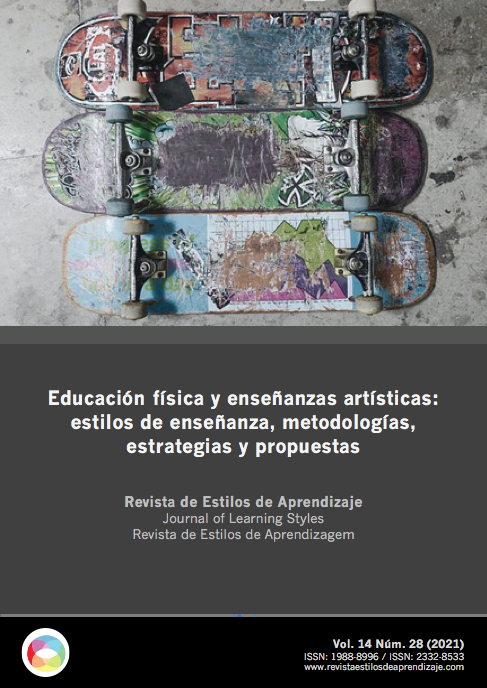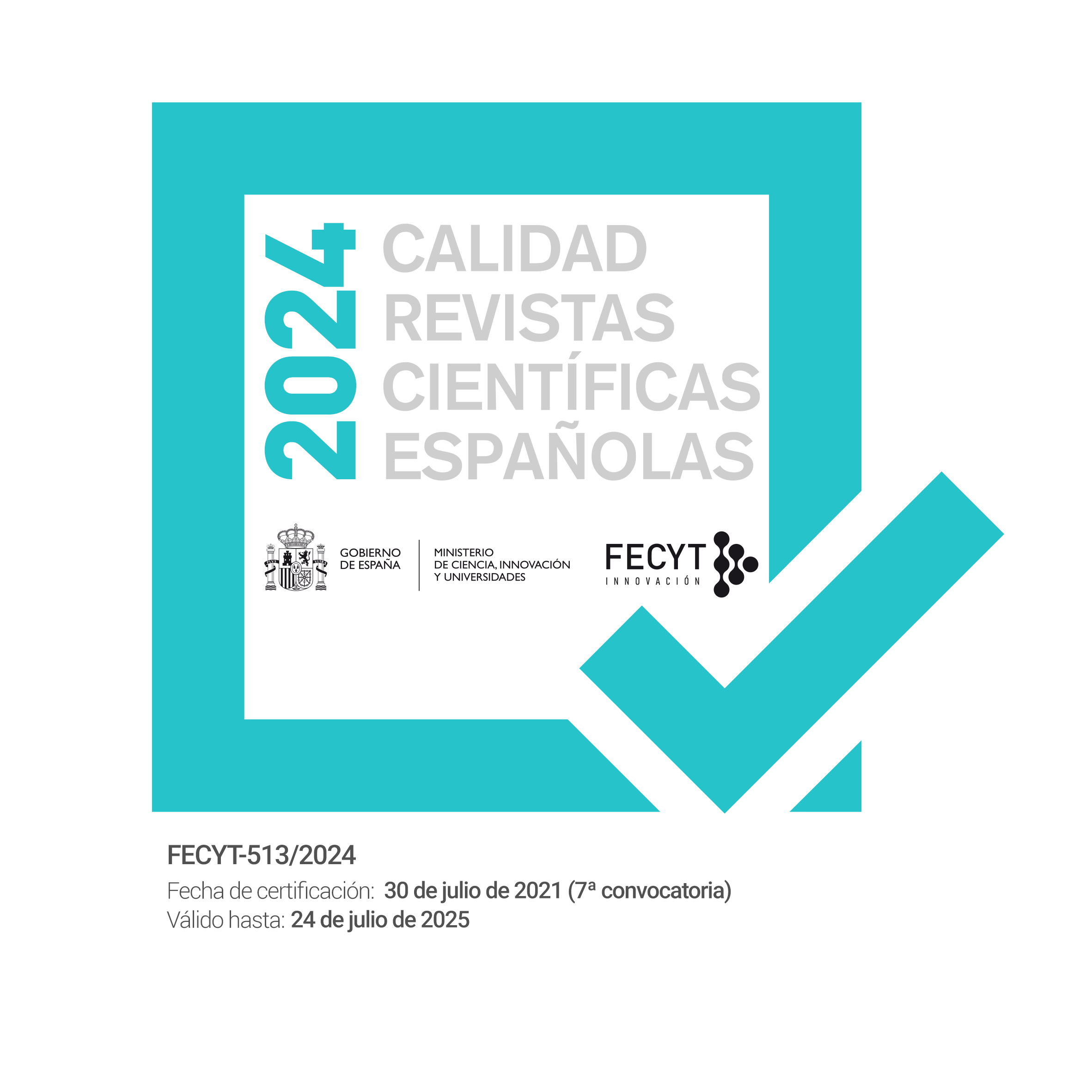Senior high school students’ learning styles and experiences in the emergency remote teaching
DOI:
https://doi.org/10.55777/rea.v14i28.3372Palabras clave:
Estilos de aprendizaje, Presencial social, Enseñanza remota de emergenciaResumen
Nowadays Mexican senior high school institutions are promoting temporally emergency remote teaching. Even though the instructional shift is just temporal, it is advisable to implement technology in education, consider student needs, learning styles, and promote student autonomy in the online learning experiences, Moreover, to include the teacher, the social, and the cognitive presences in the community of inquiry. This qualitative study aimed to analyze senior high school students' online learning experiences in relation to their learning styles. The sampling process was voluntary and consists of 37 participants. The results show predominance of theorist students, followed by the pragmatists, and finally, activists. Favorable learning experiences involved teachers using appropriate strategies and materials to promote learning. Negative online learning experiences were due to students' lack of understanding and interaction, as well as teachers' lack of explanation, reinforcement, and feedback, which reflect the lack of cognitive and teacher presence and omission of elements in online learning experiences that address the particularities of students regarding their learning styles.
Descargas
Citas
Abdullah, M., Daffa, W. H., Bashmail, R. M., Alzahrani, M., & Sadik, M. (2015). The impact of learning styles on Learner's performance in E-learning environment. International Journal of Advanced Computer Science and Applications, 6(9), 24- 31. https://bit.ly/3a9qWrU
Agrawal, A. K., & Mittal, G. K. (2018). The role of ICT in higher education for the 21st century: ICT as a change agent for education. Multidisciplinary Higher Education, Research, Dynamics & Concepts: Opportunities & Challenges For Sustainable Development, 1(1), 76-83. https://bit.ly/329nTvv
Alonso, C. M., Gallego, D, J., & Honey, P. (1997). Los estilos de aprendizaje: Procedimientos de diagnóstico y mejora [Learning Styles: Diagnostic and Improvement Procedures] (7ª. Ed.). Bilbao, España: Mensajero.
Álvarez- Gayou, J.L. (2003). Cómo hacer investigación cualitativa. Fundamentos y metodología. México: Páidos.
Arrosagaray, M., González-Peiteado, M., Pino-Juste, M., & Rodríguez-López, B. (2019). A comparative study of Spanish adult students’ attitudes to ICT in classroom, blended and distance language learning modes. Computers & Education, 134, 31-40. https://doi.org/10.1016/j.compedu.2019.01.016
Barbour, M. K., LaBonte, R., Hodges, C., Moore, S., Lockee, B., Trust, T., & Kelly, K. (2020). Understanding pandemic pedagogy: Differences between emergency remote, remote, and online teaching. State of the Nation: K-12 e-Learning in Canada. Retrieved from http://hdl.handle.net/10919/101905
Barraza, A. (2006). La encuesta: ¿Método o técnica? Investigación educativa duranguense [The survey: method or technique? Duranguense educational research]. 5, 1-17. https://dialnet.unirioja.es/descarga/articulo/2880937.pdf
Candarli, D., & Yuksel, H. G. (2012). Students’ perceptions of video-conferencing in the classrooms in higher education. Procedia-Social and Behavioral Sciences, 47, 357- 361. https://doi.org/10.1016/j.sbspro.2012.06.663
Çapuk, S. (2015). ICT Integration models into middle and high school curriculum in the USA. Procedia-Social and Behavioral Sciences, 191, 1218-1224. https://doi.org/10.1016/j.sbspro.2015.04.409
Çelik, B., & Gündoğdu, K. (2016). The effect of using humor and concept cartoons in high school ICT lesson on students’ achievement, retention, attitude and anxiety. Computers & Education, 103, 144-157. https://doi.org/10.1016/j.compedu.2016.10.008
Chandra, V., & Briskey, J. (2012). ICT driven pedagogies and its impact on learning outcomes in high school mathematics. International Journal of Pedagogies and Learning, 7(1), 73-83.
Doulik, P., Skoda, J., & Simonova, I. (2017). Learning styles in the e-learning environment: the approaches and research on longitudinal changes. International Journal of Innovation and Learning, 21(4), 417-434. https://doi.org/10.1504/IJIL.2017.084359
Garrison, D. R., Anderson, T., & Archer, W. (2001). Critical thinking and computer conferencing: A model and tool to assess cognitive presence. http://hdl.handle.net/2149/740
Garrison, D. R., & Vaughan, N. D. (2008). Blended learning in higher education: Framework, principles, and guidelines. United States of America: John Wiley & Sons.
Hattie, J., & Timperley, H. (2007). The power of feedback. Review of educational research, 77(1), 81-112. DOI: 10.3102/003465430298487
Hayes, D. N. (2007). ICT and learning: Lessons from Australian classrooms. Computers & Education, 49(2), 385-395. https://doi.org/10.1016/j.compedu.2005.09.003
Herrera, L. (2012). Self-Access Language Learning: Students’ Perceptions of and Experiences Within this New Mode of Learning. Profile: Issues in Teachers’ Professional Development, 14(1), 113-127. https://revistas.unal.edu.co/index.php/profile/article/view/29061
INEGI. (2019). Estadísticas a propósito del día mundial del internet [Statistics on world internet day]. INEGI. https://bit.ly/3g47osX
ISBE. (2020). Recomendaciones de aprendizaje remoto durante la emergencia de Covid-19 [Remote learning recommendations during the Covid-19 emergency]. ISBE. https://bit.ly/3mF550L
Kefee, J. W., & Ferrell, B. G. (1990). Developing a defensible learning style paradygm. Educational leadership, 48(2), 57-61. https://eric.ed.gov/?id=EJ416436
Martínez, M. (2006). La investigación cualitativa: síntesis conceptual. Revista IIPSI, 9(1), 123-146. http://revistasinvestigacion.unmsm.edu.pe/index.php/psico/article/viewFile/4033/3213
Moto, S., Ratanaolarn, T., Tuntiwongwanich, S., & Pimdee, P. (2018). A Thai junior high school students’ 21st century information literacy, media literacy, and ICT literacy skills factor analysis. International Journal of Emerging Technologies in Learning (IJET), 13(09), 87-106. https://onlinejour.journals.publicknowledgeproject.org/index.php/i-jet/article/view/8355
Muñoz, J., & González, A. (2010). Teaching Reading Comprehension in English in a Distance Web-Based Course: New Roles for Teachers. Profile, 12(2). 69-85. http://www.scielo.org.co/scielo.php?script=sci_arttext&pid=S1657-07902010000200005
Nair, R. J. (2016). Self-image and self-esteem for a positive outlook. Training Manual on Theeranaipunya - Equipping Fisherwomen Youth for Future. ICAR-Central Marine Fisheries Research Institute, Kochi, 75-78. http://eprints.cmfri.org.in/10815/
Nikolopoulou, K., & Gialamas, V. (2016). Barriers to ICT use in high schools: Greek teachers’ perceptions. Journal of Computers in Education, 3(1), 59-75. https://doi.org/10.1007/s40692-015-0052-z
O’Connor, H., & Gibson, N. (2003). A step-by-step guide to qualitative data analysis. Pimatisiwin: A Journal of Indigenous and Aboriginal Community Health, 1(1), 63- 90. https://bit.ly/3mJ02fJ
Özyurt, Ö., & Özyurt, H. (2015). Learning style based individualized adaptive e-learning environments: Content analysis of the articles published from 2005 to 2014. Computers in Human Behavior, 52, 349-358. https://doi.org/10.1016/j.chb.2015.06.020
Quintanal, F. (2017). Estudio de caso con estudiantes de física y química de bachillerato: estilos de aprendizaje, ciencia y publicidad. Revista De Estilos De Aprendizaje, 10(20). Recuperado a partir de http://revistaestilosdeaprendizaje.com/article/view/1059
Ramírez Gallegos, E.N., Lozano Rodríguez, A. y Zárate Ortiz, J.F. (2017). Los estilos de aprendizaje y el rendimiento académico en estudiantes de cuarto semestre de bachillerato [Learning styles and academic performance in students in the fourth semester of high school]. Revista De Estilos De Aprendizaje, 10(20), 182-219. http://revistaestilosdeaprendizaje.com/article/view/1062/1779
Rourke, L., Anderson, T., Garrison, D. R., & Archer, W. (2001). Assessing social presence in asynchronous text-based computer conferencing. The Journal of Distance Education/Revue de l'Éducation à Distance, 14(2), 50-71. https://www.learntechlib.org/p/92000/
Salehi, H., & Salehi, Z. (2012). Integration of ICT in language teaching: Challenges and barriers. In 3rd International Conference on e-Education, e-Business, e-Management and e-Learning IPEDR (Vol. 27). https://www.academia.edu/28261513/Integration_of_ICT_in_language_teaching_Challenges_and_barriers
Seçer, Ş. Y., Şahin, M., & Alcı, B. (2015). Investigating the effect of audio-visual materials as warm-up activity in Aviation English courses on students’ motivation and participation at high school level. Procedia-Social and Behavioral Sciences, 199,120-128. https://doi.org/10.1016/j.sbspro.2015.07.495
SEP (2019). Principales cifras del sistema educativo nacional. México[Main figures of the national education system]: SEP. https://bit.ly/32gay4t
Tordecilla González, J. P., Nuñez, B. A., & Dávila, C. M. G. (2017). Estilos de aprendizaje en estudiantes de educación media y su relación con el desempeño en las pruebas Saber 11. Revista De Estilos De Aprendizaje, 10(20). Recuperado a partir de http://revistaestilosdeaprendizaje.com/article/view/1055
Wagner, E., Enders, J., Pirie, M., & Thomas, D. (2016). Supporting academic integrity in a fully-online degree completion program through the use of synchronous video conferences. Journal of Information Systems Education, 27(3), 159. http://jise.org/volume27/n3/JISEv27n3p159.html
Yeop, M. A., Wong, K. T., & Goh, P. S. C. (2016). Blended learning: pedagogy, learning styles, and assessment activities in the classroom. International Journal of Advanced and Applied Sciences, 33(11), 36-39.
Zambrano Acosta, J., Arango Quiroz, L., & Lezcano Rueda, M. (2018). Estilos de aprendizaje, estrategias de aprendizaje y su relación con el uso de las TIC en estudiantes de educación secundaria [Learning styles, learning strategies and their relationship with the use of ICT in secondary school students]. Revista De Estilos De Aprendizaje, 11(21). http://revistaestilosdeaprendizaje.com/article/view/1087
Descargas
Publicado
Cómo citar
Número
Sección
Licencia
Con el envío del original, el/los autor/es declaran que conocen y aceptan, en su totalidad, la política de privacidad así como los derechos de autor de la Revista de Estilos de Aprendizaje.
La Revista Estilos de Aprendizaje ofrece acceso libre y abierto a su contenido de forma totalmente gratuita con el fin de hacer llegar la investigación científica a sus lectores y sociedad en general. Todos los contenidos digitales son de acceso libre y gratuito y se publican bajo licencia de Creative Commons:

La cesión de derechos se realiza bajo la licencia Creative Commons Reconocimiento-NoComercial-SinObraDerivada 4.0 Internacional (CC-BY-NC-ND 4.0)
Bajo esta licencia, está permitida la reproducción y difusión de los contenidos de la revista con fines educativos, sociales y de transmisión de conocimiento, sin ánimo de lucro y siempre que no se modifiquen, se cite la procedencia y la autoría.
La licencia a la que se acoge la Revista de Estilos de Aprendizaje permite copiar y distribuir los contenidos de la revista, siempre que se reconozca la autoría de la obra, especificando correctamente el autor y la entidad editora. No se puede utilizar la obra para fines comerciales y tampoco se puede alterar, transformar o generar una obra derivada a partir de esta obra.
La Revista de Estilos de Aprendizaje es una revista de acceso abierto. La publicación de artículos o reseñas en la Revista no da derecho a remuneración alguna. Así mismo, tanto para los autores como los lectores, la revista es gratuita Creative Commons Reconocimiento-NoComercial-SinObraDerivada 4.0 Internacional (CC-BY-NC-ND 4.0).
Desde la Revista de Estilos de Aprendizaje se invita al/los autor/autores a ampliar la visibilidad y el alcance de sus artículos publicados mediante la redifusión de los mismos en:
- Espacios web y redes personales, así como en encuentros y foros científicos.
- Archivos abiertos institucionales en Universidades, repositorios educativos y Centros de Investigación.
- Redes académicas y científicas (Researchgate, Academia.edu, Plubons, etc.).
Se requiere que en todos estos espacios y publicaciones se incluyan todos los datos bibliográficos de la publicación.

























